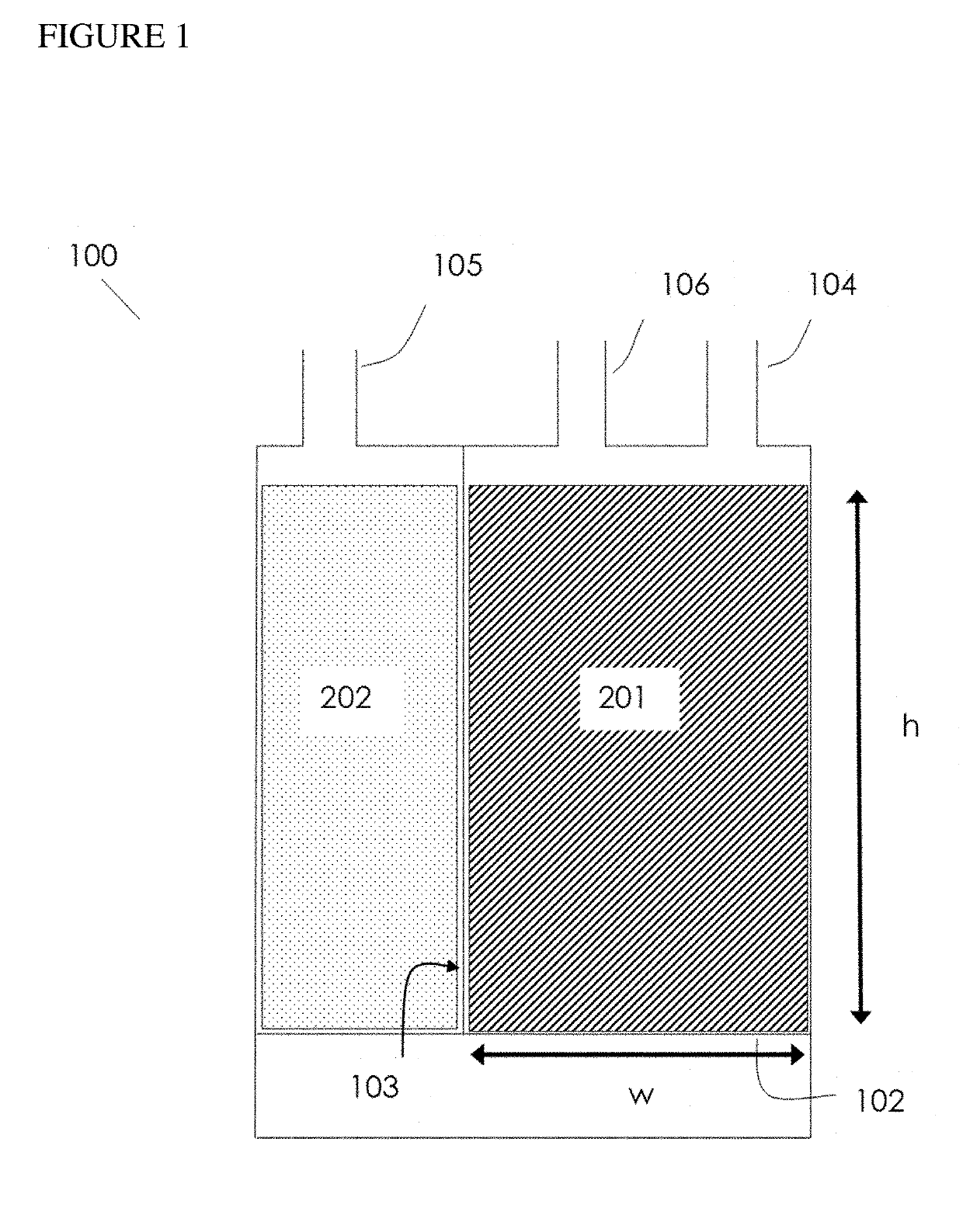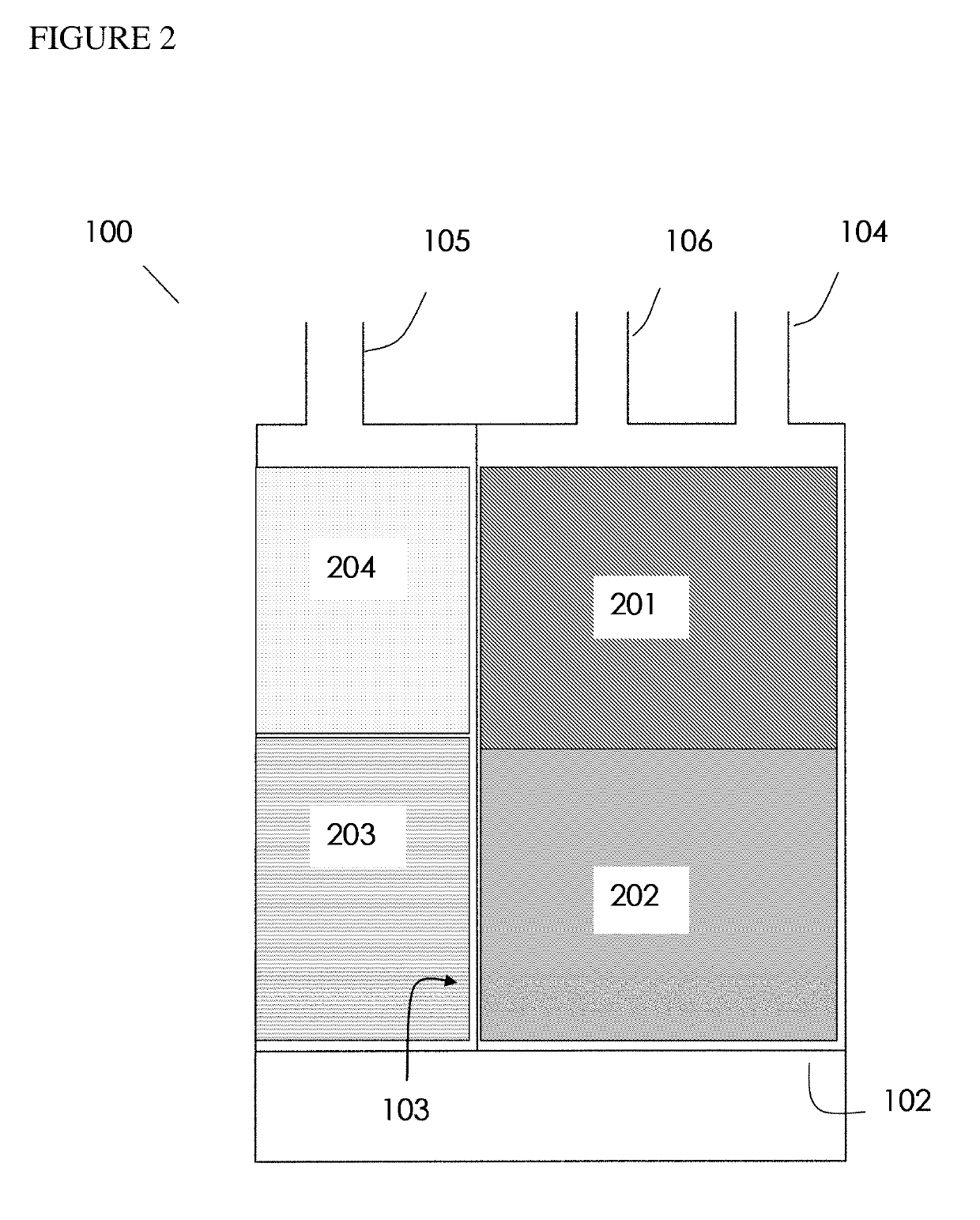Low emissions, high working capacity adsorbent and canister system
a canister system and high working capacity technology, applied in the direction of machines/engines, mechanical equipment, separation processes, etc., can solve the problems of hydrocarbon air pollution, damage to carbon porosity, collapse of adsorptive porosity, etc., to achieve low dbl bleed emission performance properties, high working capacity, and low cost
- Summary
- Abstract
- Description
- Claims
- Application Information
AI Technical Summary
Benefits of technology
Problems solved by technology
Method used
Image
Examples
examples
[0125]Table 1 has the descriptions and properties of comparative commercial examples 1 through 8. Commercial examples of shape & activate activated carbon adsorbents include CNR 115 (Cabot Corporation, Boston, Mass.), KMAZ2 and KMAZ3 (Fujian Xinsen Carbon, Fujian Sheng, China), 3GX (Kuraray Chemical Ltd., Bizen-shi, Japan), and NUCHAR® BAX 1100 LD, BAX 1500, BAX 1500E, BAX 1700 (Ingevity Corporation, North Charleston, S.C.). All these adsorbents are in the form of cylindrical pellets of about 2-2.5 mm in diameter. Table 2 has the descriptions and properties of inventive grind & bind examples.
[0126]Examples 9 and 10 were prepared from carbon powder made from phosphoric acid-activated sawdust (NUCHAR® FP-1100 by Ingevity Corporation). This carbon powder had a powder butane activity of 42.6 g / 100 g, and a mean particle diameter of 39.1 microns, a d10% of 7.5 microns, d50% of 34.7 microns, and a d90% of 77.6 microns, as measured by a Malvern Panalytical model Mastersizer 2000 laser part...
PUM
| Property | Measurement | Unit |
|---|---|---|
| concentrations | aaaaa | aaaaa |
| size | aaaaa | aaaaa |
| mesopore size | aaaaa | aaaaa |
Abstract
Description
Claims
Application Information
 Login to View More
Login to View More - R&D
- Intellectual Property
- Life Sciences
- Materials
- Tech Scout
- Unparalleled Data Quality
- Higher Quality Content
- 60% Fewer Hallucinations
Browse by: Latest US Patents, China's latest patents, Technical Efficacy Thesaurus, Application Domain, Technology Topic, Popular Technical Reports.
© 2025 PatSnap. All rights reserved.Legal|Privacy policy|Modern Slavery Act Transparency Statement|Sitemap|About US| Contact US: help@patsnap.com



